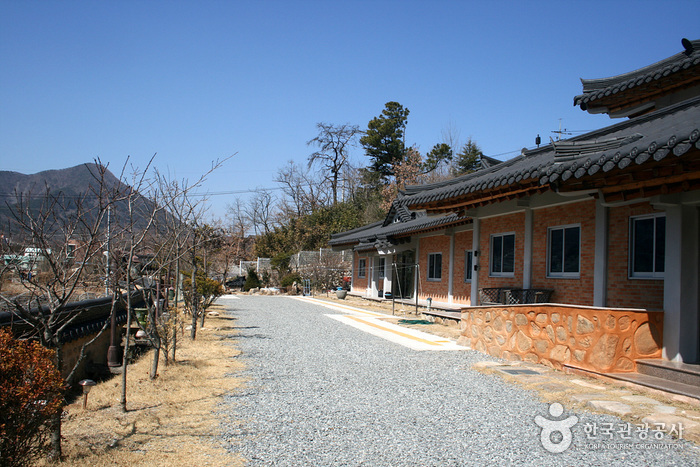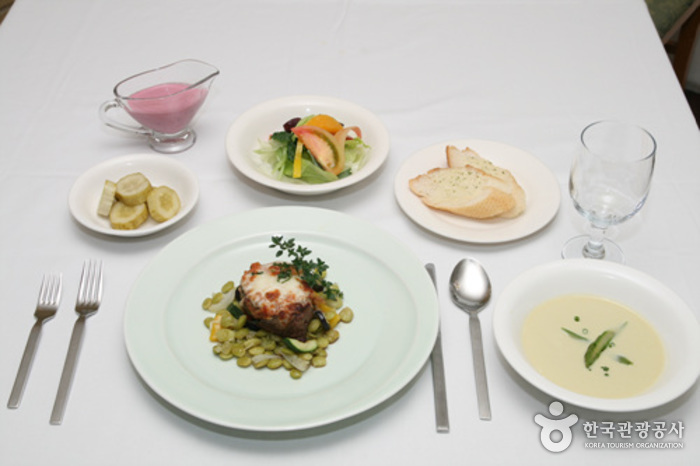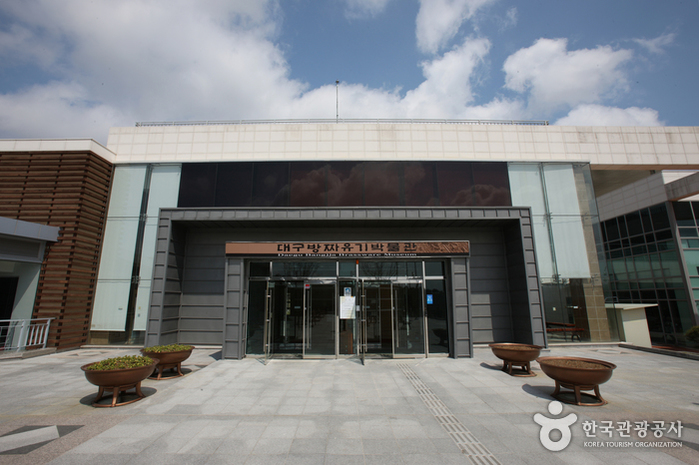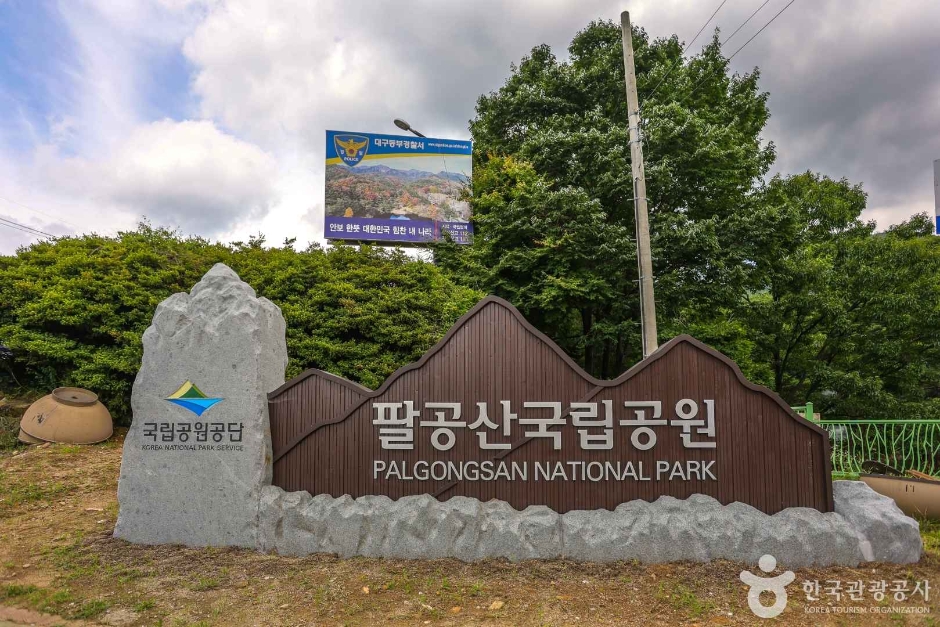ER NC Department Store - Kyungsan Branch [Tax Refund Shop] (ER NC백화점 경산)
14.0Km 2024-04-18
39, Jungang-ro, Gyeongsan-si, Gyeongsangbuk-do
-
Olive Young - Gyeongsan Market Branch [Tax Refund Shop] (올리브영 경산시장점)
14.3Km 2024-06-27
78, Jungang-ro, Gyeongsan-si, Gyeongsangbuk-do
-
Museum of Natural Dye Arts (자연염색박물관)
14.4Km 2021-03-19
17, Pagye-ro 112-gil, Dong-gu, Daegu
+82-53-981-4330
The Museum of Natural Dye Arts was formed to collect and preserve the traditional way of dyeing, as well as inform the high quality of Korean natural dye to the world. The museum has various art products from around the world. Divided into two floors, Ahwon Gallery on the first floor showcases replicas of ancient dyeing tools and provides information on the natural dyeing process. The Relic Hall on the second floor displays pieces of ancient artwork including fabric, clothes, pillows, blankets and accessories, all made using different methods such as dyeing, embroidery, quilting, knotting and sewing.
St. Mary's Pine Forest Village (성모솔숲마을)
14.5Km 2024-02-08
166 Songnae-gil, Gakbuk-myeon, Cheongdo-gun, Gyeongsangbuk-do
St. Mary's Pine Forest Village, a serene retreat house under the Catholic Archdiocese of Daegu, was initially established as a haven for the sick and those seeking spiritual retreats. However, it is now open to all, regardless of their reason for visiting. A mass is celebrated at eleven every morning in the church, welcoming both Catholics and non-Catholics alike. Visitors who are not of the Catholic faith are also encouraged to explore the church, or enjoy a peaceful stroll through the surrounding pine forest. The village comprises several facilities, including the Pine Forest Church, the Way of the Cross, a restaurant, a café, and the Yedam Gallery, which is located within the café.
Yuksinsa Shrine (육신사)
15.8Km 2024-02-15
64 Yuksinsa-gil, Habin-myeon, Dalseong-gun, Daegu
Yuksinsa Shrine is a revered site dedicated to honoring the Sayuksin. Established during the Joseon dynasty, it stands well-preserved to this day. "Sayuksin" translates to "six dead ministers," referencing the six loyal subjects who, in 1453, attempted to restore King Danjong of the Joseon dynasty but were ultimately captured and executed. The shrine's entrance, marked by the Chungjeolmun Gate, is flanked by long rows of crape myrtle trees. These trees create a stunning visual spectacle when their red flowers are in bloom.
Blue Moon Restaurant (블루문)
15.9Km 2020-04-30
685, Pagye-ro, Dong-gu, Daegu
+82-53-981-8088
Located at the foot of Palgongsan Mountain, Blue Moon is a great place to enjoy authentic steaks and fusion dishes. Take a stroll in the nearby park and watch the water fountain next to the walking trail. The restaurant has four floors, each with a different atmosphere to suit any occasion.
Nokdongseowon Confucian Academy (녹동서원)
16.0Km 2024-02-06
218 Urok-gil, Gachang-myeon, Dalseong-gun, Daegu
+82-53-659-4490
Nokdongseowon Confucian Academy was built in 1789 in honor of General Kim Chung-seon (1571-1642), who contributed greatly to Korea's defense during the Imjin War (1592-1598). The academy was shut down in 1868, and reinstated in 1885. Then, in 1971, it was moved to its current location. Today, General Kim's tablet is enshrined in this hall, where a memorial service is held every March. Nearby attractions on the grounds of Nokdongseowon include Nokdongsa Temple, Sunguidang Shrine, Hyangyangmun Gate and memorial stones.
Dalseong Korea-Japan Friendship Center (달성 한일우호관)
16.0Km 2022-12-29
206, Urok-gil, Dalseong-gun, Daegu
+82-53-659-4490
The Dalseong Korea-Japan Friendship Center opened in 2012 to highlight the philanthropy of General Kim Chung-seon (Japanese name Sayaka, 1571-1642) and promote friendship between Korea and Japan. Kim Chung-seon was a Japanese general who defected to Korea during the Imjin War. Shortly after arriving on Korean soil as a commander of a Japanese army, Kim, together with his soldiers, defected to Korea, a choice that has been traditionally attributed to his respect for Korean culture. He transferred the technology of manufacturing rifles to the Korean army and contributed greatly in battles in Gyeongju and Ulsan.
A great number of tourists visit the center to learn about history, including students and their parents, as well as numerous Japanese tourists who visit to commemorate the spirit of General Kim. The center features exhibition rooms, a 3D theater, a tea ceremony room, relics, manifestations of traditional games in Korea and Japan, documents from Wakayama prefecture in Japan, and a site for experiencing archery, all of which can be utilized free of charge.
Daegu Bangjja Brassware Museum (대구 방짜유기박물관)
16.1Km 2019-03-19
29, Dojang-gil, Dong-gu, Daegu
+82-53-606-6171~4
Bangjja Brassware Museum is the first original museum of its kind in Korea. Unknown to many, Bangjja Brassware possesses a host of beneficial attributes and is used both for storing food and for growing plants. One of its primary functions is that of cultivating nutritive elements.
The Bangjja Brassware Museum in Daegu has numerous brassware products on hand that were generously donated by Lee Bong-Ju. His collection was subsequently appointed intangible cultural asset number seventy-seven by the Korean government.
The museum’s layout is rather intricate. Both the basement floor and second ground floor consist of three exhibit halls, a data research hall, a cultural experience hall, a video education hall, an outdoor stage, and several planning exhibit halls. In the Brassware Cultural Hall, a display boasting Korea’s history regarding various kinds of brassware, together with other relevant information is on hand for visitors. In the nearby Donation Hall, a National Intangible Cultural Heritage, Lee Bong Ju’s luxury brassware collection, is on display. In the Reappearance Hall there are makeshift displays illustrating where brassware was first produced and where it was traded.
Palgongsan National Park (Pagyesa Temple District) (팔공산국립공원(파계사지구))
17.2Km 2025-04-08
741 Pagye-ro, Dong-gu, Daegu
+82-53-939-0080
Palgongsan National Park is located close to Palgongsan Mountain, one of the larger mountains in the Taebaek Mountain Range. Palgongsan Mountain is located 20 kilometers northeast from downtown Daegu, where Nakdonggang River and Geumhogang River meet. The mountain has three peaks in a row: Birobong Peak in the center and Dongbong Peak (aka Mitabong, 1,155 m) and Seobong Peak (aka Samseongbong, 1,150 m) on each side.
The park is within the administrative district of Dong-gu, Daegu and has four towns along its border including Yeongcheon-si, Gyeongsan-si, and Chilgok-gun. A number of Buddhist temples including Donghwasa Temple, the headquarters of the 9th Buddhist Parish, are located in the area.
The park has numerous rocks and valleys and is carpeted with azaleas in the spring. In autumn, many visitors flock to the park to admire the fall foliage on the trees lining the 16.3 kilometer-long roadway that runs through the park. With vibrant green leaves in spring and a delicate snowscape in the winter, Palgongsan Mountain is an attractive destination for visitors throughout the year.
![ER NC Department Store - Kyungsan Branch [Tax Refund Shop] (ER NC백화점 경산)](http://tong.visitkorea.or.kr/cms/resource/57/2883757_image2_1.jpg)





 English
English
 한국어
한국어 日本語
日本語 中文(简体)
中文(简体) Deutsch
Deutsch Français
Français Español
Español Русский
Русский